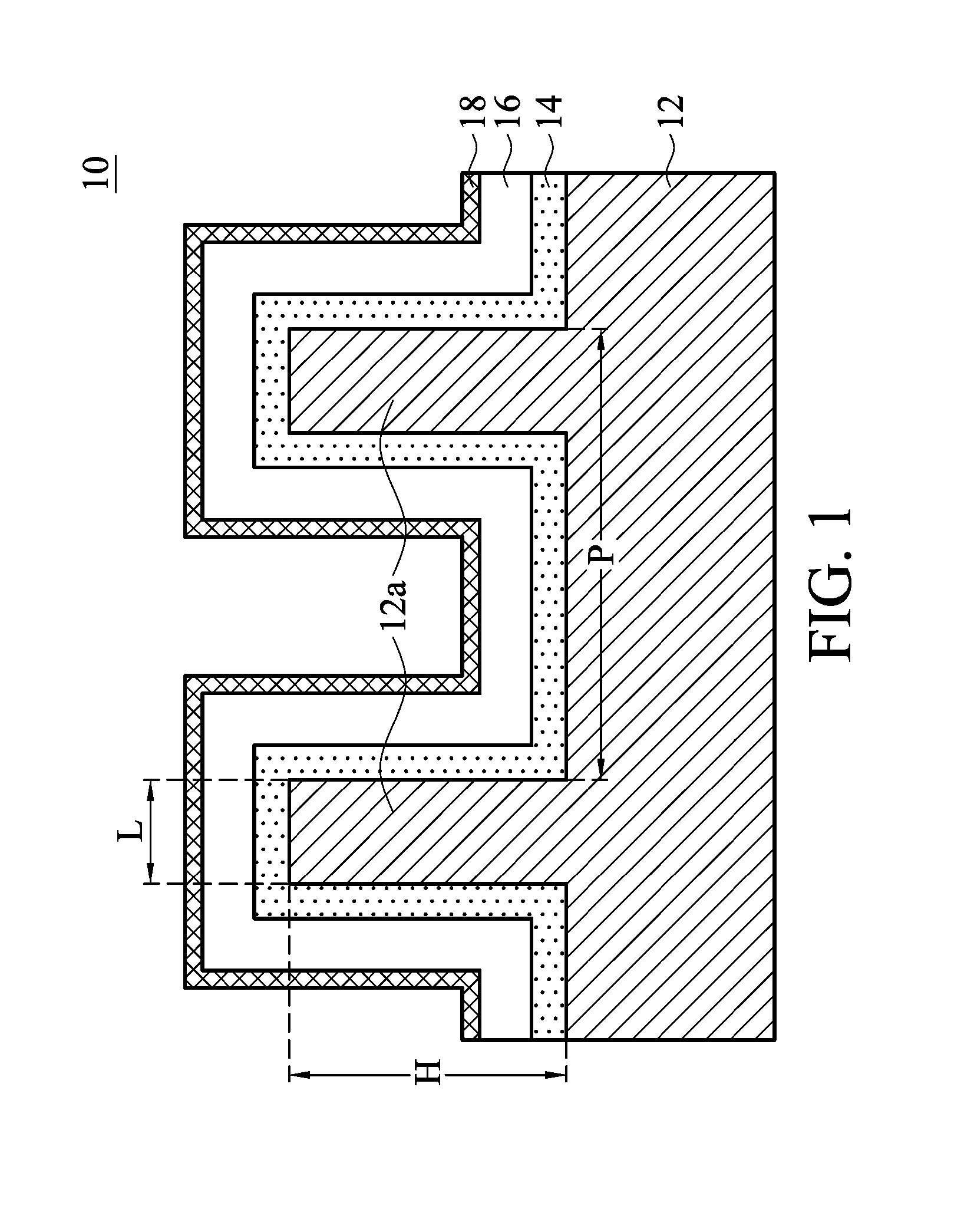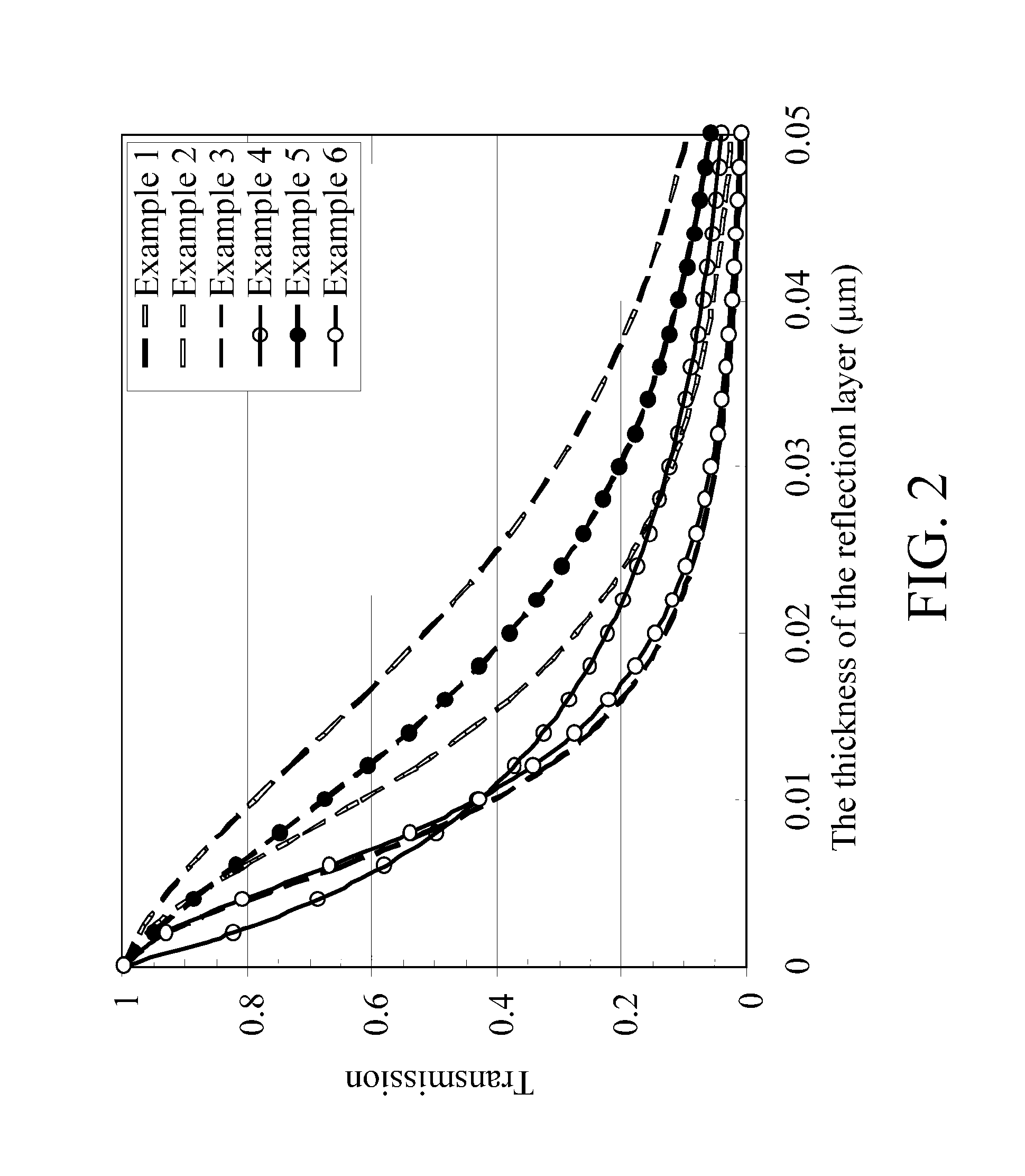Surface-enhanced raman scattering substrate and a trace detection method of a biological and chemical analyte using the same
a surface-enhanced raman scattering and trace detection technology, applied in the field of substrates, can solve the problems of limiting the time-effectiveness and popularity of traditional detection instruments, taking a lot of time, and high cost of traditional detection instruments
- Summary
- Abstract
- Description
- Claims
- Application Information
AI Technical Summary
Benefits of technology
Problems solved by technology
Method used
Image
Examples
example 15
[0047]Example 15 has a structure as follows: the reflection layer (35 nm of Ag layer), the dielectric layer (200 nm of SiO2 layer), and the metal thin film layer (10 nm of Ag film) are sequentially formed on a substrate having the periodic nanostructure (period=400 nm, height=240 nm).
[0048]Comparative Example 2 has a structure as follows: the reflection layer (35 nm of Au layer), the dielectric layer (200 nm of SiO2 layer), and the metal thin film layer (10 nm of Ag thin film layer) are sequential formed on a flat substrate.
[0049]FIG. 6 is a graph showing absorption spectrum of the Example 15 and Comparative Example 2. As shown in FIG. 6, the Fabry-Perot resonator of Comparative Example 2 has two peaks of 830 nm and 430 nm individually corresponding to the FP mode#1 and FP mode#2. When the Fabry-Perot resonator is formed on the substrate having the periodic nanostructure (Example 15), the absorption spectrum becomes more complicated because the probability of the Localized Surface P...
PUM
 Login to View More
Login to View More Abstract
Description
Claims
Application Information
 Login to View More
Login to View More - R&D
- Intellectual Property
- Life Sciences
- Materials
- Tech Scout
- Unparalleled Data Quality
- Higher Quality Content
- 60% Fewer Hallucinations
Browse by: Latest US Patents, China's latest patents, Technical Efficacy Thesaurus, Application Domain, Technology Topic, Popular Technical Reports.
© 2025 PatSnap. All rights reserved.Legal|Privacy policy|Modern Slavery Act Transparency Statement|Sitemap|About US| Contact US: help@patsnap.com



